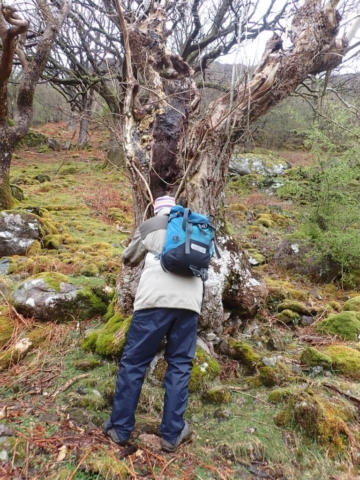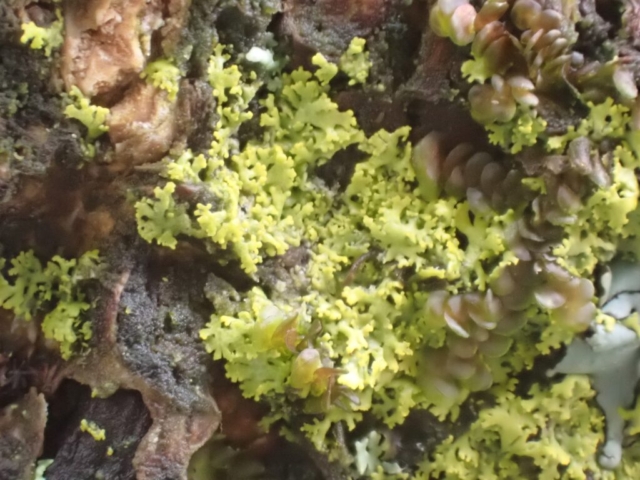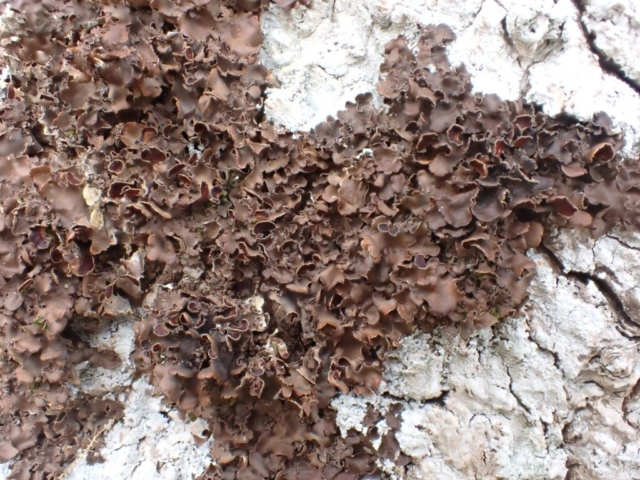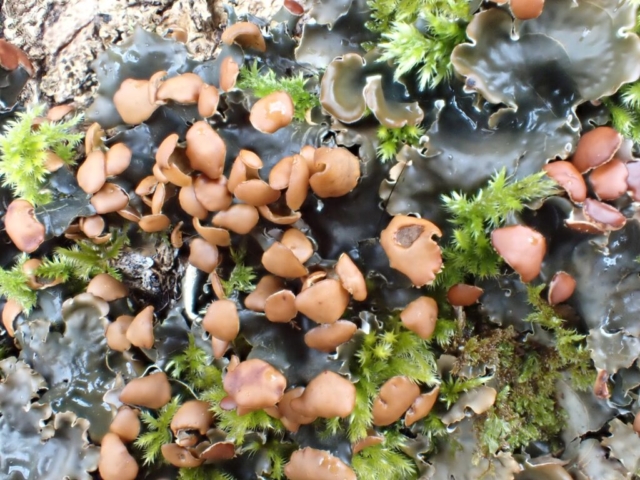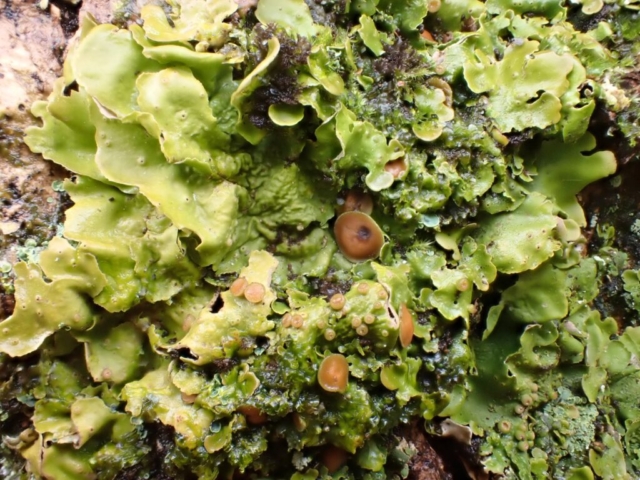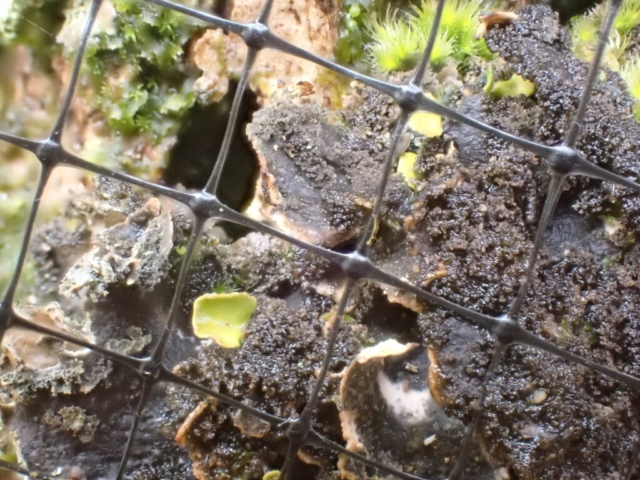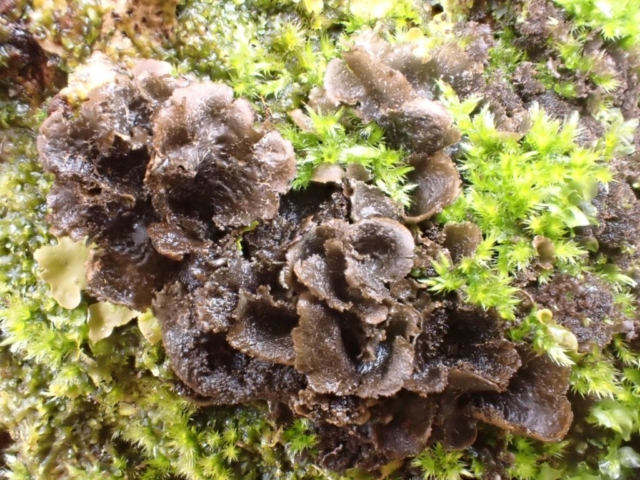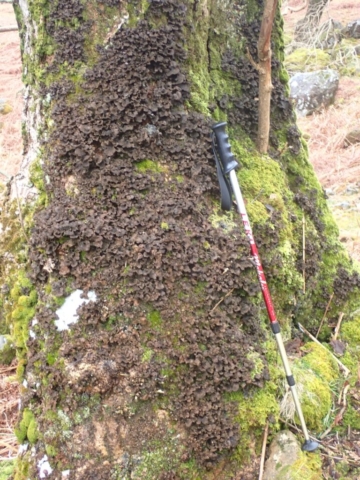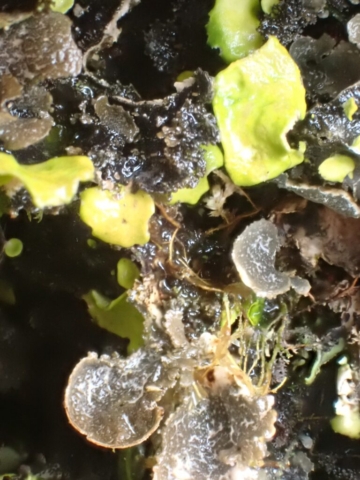We were going to the rainforest so… it rained. Which put some folk off. But it didn’t rain that much: the four of us who gathered to look at lichen ended up being able to look at things without too much watery difficulty.
Predictably, we got rather distracted before the main event. The moment we left the road at Seathwaite Bridge we found a wall jam-packed with typical saxicolous species: Parmelia saxatilis; Xanthoparmelia conspersa; Lecanora soralifera; Hypotrachyna revoluta sensu lato; Ochrolechia androgyna. So it was a while before we were heading up the slope from tree to tree, noting the difference between the lichens on older oaks and those on hazels, though some species like Thelotrema lepadinum seemed happy on both.
It was, of course, the Lobarion lichens on the older ashes that stole the show. We were examining a Collema (subflaccidum I think) when we realised there was a profuse growth of Peltigera praetextata on the other side of the tree, which led us to notice the sorediate margins of Nephroma parile. The next tree had profuse Nephroma laevigatum for contrast, with apothecia the other way round from those on Peltigera. There was Sticta fuliginosa too, which had us sniffing our fingers for fish. At some point someone said “the more knackered the tree, the better the lichens” and I couldn’t disagree.
There’s several curiosities about these Seathwaite woods. The ashes aren’t that big, but are very decrepit and have amazing lichens in spite of it being a mine and industrial site just a couple of hundred years ago. The Borrowdale yews, where we had lunch, are pretty enigmatic too. And there’s no Lobaria pulmonaria there. Except there is now, because of the translocations undertaken in 2020. We looked at a few of these: some were growing really healthily.
The translocations of dual morph Sticta canariensis were doing OK too: the brown lobes have cyanobacteria (“blue-green algae”) as the photobiont, whilst the green lobes that protrude from them have algae doing the job. The fungi is the same in both parts. We quickly found a larger, “free-living” population of dual morph S. canariensis, and then some large thalli of vivid green Ricasolia (was Lobaria) virens, complete with little volcanoes on the lobes and beautiful apothecia.
We made out way back through the wood, hopping from oak to ash to hazel but finally finished at an ash with the largest growth of Sticta I’ve ever seen. There was more than I could shake my stick at; great overlapping brackets cascaded down the trunk. I think it is Sticta sylvatica, but I struggle with telling the difference between that and S. fuliginosa.
I say finished, but of course we didn’t. There was a little revision on the wall at the entrance to the wood, and then a quick look at the Candelaria concolor on the rowans in the car park. Very different in scale, habitat requirements and conservation evaluation. There seemed rather more than I remembered. A nice little thing, even if it’s not as dramatic as the Lobarion.
Text and photos: Pete Martin

